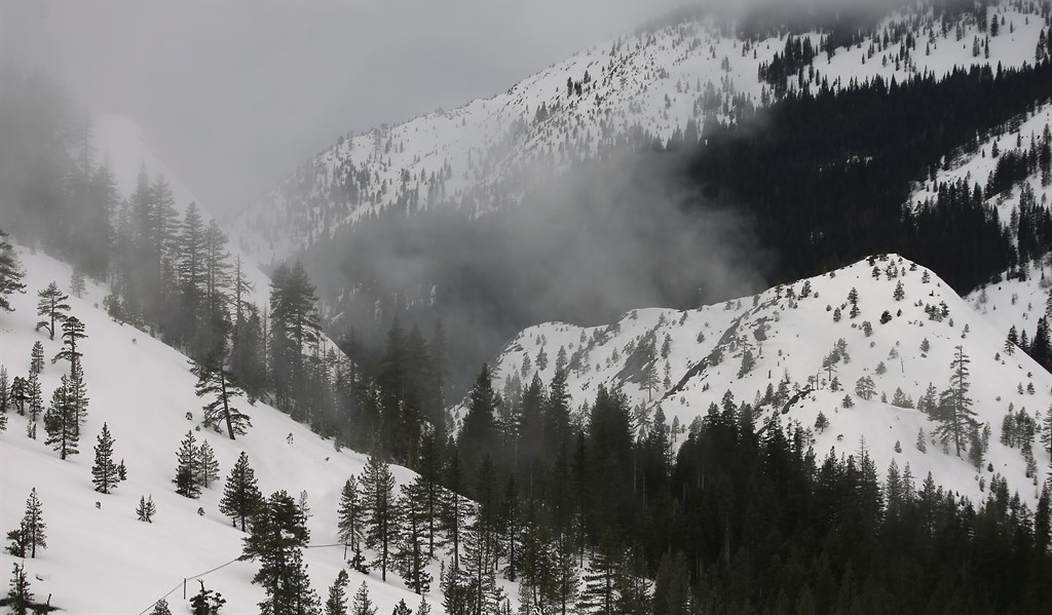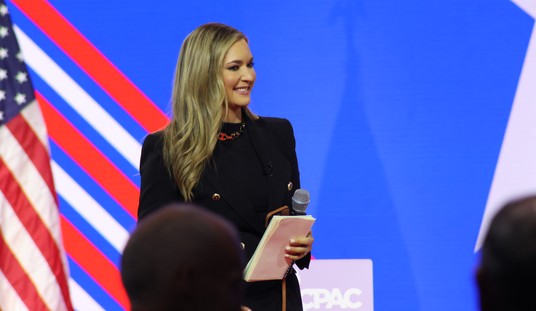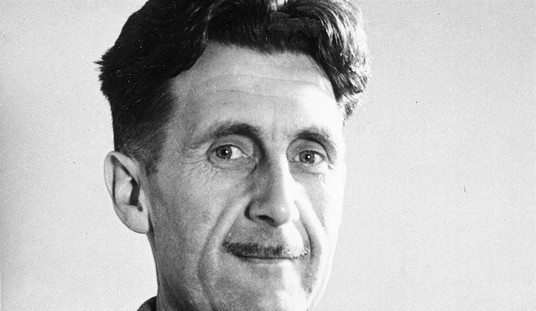I live in Southern California, where Albert Hammond had a top 5 hit in 1972 proclaiming that it never rains here. If climate change is truly making drought increasingly worse by the year, longer-lasting and never-ending, it seems incredible to me that we had a song about droughts being ubiquitous in California 51 years ago. We should be the Sahara Desert by now.
And this is six years before Leonard Nimoy on television quoted the leading climate scientists of the age predicting that because of climate change resulting in global cooling, we would not only have rain in Southern California, but a new ice age, and how bad that would be. In the last half century, the science has of course moved from global cooling to global warming, then to climate change, with a gradual increase in the hyperbolic rhetoric to get people to pay attention to the apocalypse they claim is nigh.
What has actually resulted in California? Some very wet years, some very dry years, and some very average years, you’ll be surprised to learn.
Rachel Becker is an MIT grad with a Master’s, and moved into the world of journalism around a decade ago. She’s a thirty-something reporter who has written most recently for CALmatters about the impact of climate change and California’s increasingly dire water outlook. On September 28, 2022, she wrote the following story with the headline, “Four in a row: California drought likely to continue”. Here’s a sample of the what was probably going to become of the Golden State, according to the scientists.
After its driest three-year stretch on record, California braces for another year with below-average snow and rain. Conditions are shaping up to be a “recipe for drought.”
Despite some rain in September, weather watchers expect a hot and dry fall, and warn that this winter could bring warm temperatures and below-average precipitation.
Keep in mind that she’s writing her story about the bleakness of California’s rain futures after California actually had a rarity – rain in September. Instead of dialing back her doomcasting, though, she powered on. Becker cited a few of the current crop of climate scientists, including 33-year old Daniel Swain out of UCLA, who prophesied,
“I would still put my money on dry, even in the northern third of the state,” he said. “It’s not a guarantee. But if you were to see 50 winters like this one, most of them would be dry.”
Swain then went on to talk about how hot California has been getting, saying that’s making his predictions of doom easier.
“One thing that is unfortunately becoming easier to anticipate are warmer than average conditions due to climate change,” Swain said.
Here’s the problem. They were all wrong. 100%, undeniably, certifiably, ass-backwards wrong. And yet, they’re still the go-to experts even as we’ve had trillions of gallons of water and dozens of feet of snowpack hit the Sierras since the end of 2022. And we’re not done, yet.
I’m not sure if there’s a motto within climate science, but if there is, it would probably be “Frequently wrong, seldom in doubt”, because that’s how they’ve responded to being wrong in their predictions time and time again. The Late Tim McCarver used to do color commentary for Fox on MLB championship and World Series games, and was legendary for making predictions based on his vast playing experience that went exactly the opposite of what he predicted. Here’s just a sample.
perfectly written, perfectly timed, perfectly executed. the best comedy sketch of the year pic.twitter.com/9YWuuPd4bR
— Double Birds (@2xBirds) June 3, 2017
McCarver did this hundreds of times during his long career in the booth. One of my favorites – “There’s zero chance he’s up there to bunt.” Batter bunts. That kind of stuff. But McCarver made his predictions in a colorful way, and never once acknowledged he got it wrong. He either argued that it should have happened the way he foresaw, or ignored it and covered it up with a bigger blunder later on in the game. And people kept overlooking the fact he had no clue what he was talking about most of the time. McCarver was the climate scientist of television analysts.
Back to our friends Daniel Swain from UCLA and his stenographer, Rachel Becker. Our predicted dry winter in California began with a series of storms that hit all over the state at the tail end of December. New Year’s Eve rained cats and dogs. Did Ms. Becker write a follow-up story saying, “I was wrong?” Of course, not. Did she at least say, “Upon further review…”? Did she write a story where she went back to her “experts” demanding to know why they were wrong, and questioning whether they know what they’re talking about in the first place? In a word, no. She went on a six-month hiatus from reporting to launch a new project. She still tweets, though, including retweeting her favorite source, Daniel Swain at UCLA, but has yet to acknowledge that her story in September was all wet, literally and figuratively.
How about Professor Swain? The rain continued on and off in California until mid-January, causing the same people claiming the historic drought would continue to immediately shift narratives to historic rainfall and snowpack due to climate change still not being enough to counter the historic drought conditions, and that the historic drought would resume with drier than normal conditions ahead in February. I’m not kidding. This is the nonsense we keep getting fed.
Update: Now that the major, multi-week storm sequence has wrapped up in California, where it rank historically? Comparable to Jan 1969 and Jan 1995 on a statewide basis, but still below our ARkStorm 2.0 "ARkHist" scenario and well below our "ARkFuture" scenario. #CAwx #CAwater https://t.co/ZZISnrsfj5 pic.twitter.com/fpwnCm0XFs
— Daniel Swain (@Weather_West) January 19, 2023
So the good professor who stood there like Babe Ruth pointing to the drought beyond the centerfield wall took 3 weeks of an atmospheric river, dusted himself off, stood back at the plate, and pointed out to the drought beyond the wall again.
Quick new Weather West post: a modestly active Feb pattern to come (probably drier than average overall, but definitely not completely dry). Plus, a debrief on the recent and historically significant Dec-Jan storm sequence in CA. #CAwx #CAwater https://t.co/RZBwlqJARr
— Daniel Swain (@Weather_West) February 3, 2023
Drier than average, eh, Sparky?
We are currently in the middle of a three-storm wave, the first dropping snow levels to 1,000 feet, which is rare but not uncommon in Southern California, with two more waves to come. Snowpack is between twice and thrice normal levels with three months to go in the current precipitation season. Reservoirs are filling up to a range between 60% and 93% of normal for this time of year after being nearly empty statewide last year. Outside of Vegas, the happiest people in Nevada are mobsters, who now can throw bodies wearing concrete shoes into Lake Mead again and not worry about them being discovered and sent to CSI. In some cases, reservoirs are letting out water because they have to save room for future storms the climate scientists were betting multiple times wouldn’t happen.
This sequence of rain, it has been posited, since everything these days is measured in terms of extremity, is a 100-year storm event. We’ve never seen anything like this before. Record this. Historic that. And it’s all attributable to climate change. It’s like listening to Russians describe stuff in the motherland to tourists. “It’s the biggest, best, tallest, oldest, most significant (insert thing here)”. It’s how Donald Trump describes everything Trump – the biggest, most beautiful, largest, bestest ever, even down to his signature brand of bottled water. Everything else is lesser quality water.
Reportage on climate issues has devolved into everything being the biggest, baddest, worst, wettest, driest, coldest, hottest in the history of record-keeping. It’s gotten to the point that if there is any claim to challenge a record in a news story, the story has lost all claim of credibility with me. I’ve not only become a climate skeptic, I’ve become a rhetoric skeptic.
Climate change was supposed to extend the drought and make it easier to predict future weather because of increased surface temperatures. And yet the same climate change has now produced record rainfall and snow that really isn’t a record, record cool temperatures for this time of year precisely because of the unpredictability of climate change that’s also causing increased surface temperatures, which is also bad. And don’t get me started on what happens when all of this gorgeous green vegetation everywhere thanks to the climate change-caused drought rainfall grows, thickens, and then dries out and dies over the summer, creating millions of acres of kindling this fall. Then you’ll see record wildfires because, you guessed it, climate change. And it’ll be the worst fire season ever – unprecedented. Except there was a time in Southern California less than a decade ago where we had a dry fall after a wetter-than-average spring. Fires sprang up everywhere, most arson-caused. But for a stretch of time, you could drive from the Mexico border north on I-5 at 65 miles an hour for two hours non-stop, turn east and drive for another two hours, and smell smoke the entire time. That’s how much of the state was on fire, just in the southern half alone.
But mark my words, if there are multiple wildfires this fall because of dry vegetation that didn’t get cleared off from the water this winter and spring, it’ll be reported as unprecedented and clear indications of climate change.
Would it be too much to ask for one of these so-called experts, or their acolytes in the press writing stories as though they’re the oracles of Delphi, to look at the almanac data, look at what’s been predicted, what’s actually happened, and question everything?
The cherry on top of the facepalm climate sundae comes from Professor Swain’s Twitter feed from Monday.
Meanwhile, in the European Alps… https://t.co/Wc8n2MX8rM
— Daniel Swain (@Weather_West) February 27, 2023
He called his drought shot twice over the last six months and took trillions of gallons of precipitation right down the middle of the plate. What does he do next? No, not Disneyland. Instead, he points to a continent away and says the Alps are drier than normal. Were they dry last year? Will he be wrong if they’re not dry next year? Or will he just point to a dry spot around the globe somewhere else if the Alps get slammed?
I’m not one to reflexively say it’s not my problem, but let’s look at reality. China and India are bringing coal-fired power plant after coal-fired power plant online with each successive month, and the disparity in emissions of CO2 between China/India and the United States increases every year, if you even believe CO2 is the source of the problem in the first place. And that’s debatable. But with the source of the offending emissions coming from one part of the world in a higher concentration, it’s really not our problem. It just isn’t, unless we’re willing to do something to force China and India to cease and desist. And Dr. Swain, who looks like Doogie Howser’s kid brother, pointing to Europe and saying, “Squirrel!” after calling and missing his shot every time, isn’t going to do anything to make me put any faith in his predictive abilities. I’d rather trust Dr. Fauci’s advice on masking.
Swain may have more letters behind his name than I do. He may be a high priest at the temple of the climate religion and believe his climate gospel much more than I ever will. But there’s one thing I have that he apparently lacks – the ability to look at results and own it when wrong. I totally admit it. I got the results of the midterm elections in 2022 wrong. I thought the Republicans were going to do a lot better, and said so on air and on podcasts. Lots of reasons why, but I underestimated the impact of the Dobbs decision on turning out otherwise disaffected liberal voters, and I underestimated how much of a negative effect the Trump brand has in swing states in key races that matter. I’m not afraid of analyzing data, not afraid of being wrong, and I’m not afraid of admitting so when it happens after missing something.
This new wave of science seems to be terrified of the prospect of being wrong, and maybe that’s because their outcomes are more narrative-based than data-based. And if enough people discover that today’s scientists are peddling pseudoscience and don’t trust or believe them anymore, they’ll lose their positions of influence, a terrifying prospect indeed for a group of professionals who reveal themselves to be progressives first, and scientists or journalists second.







